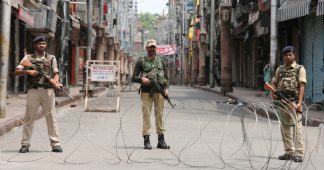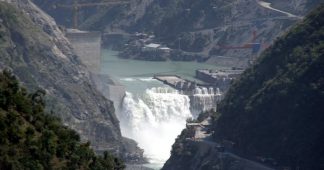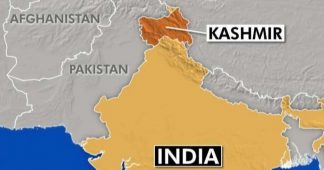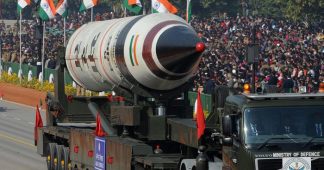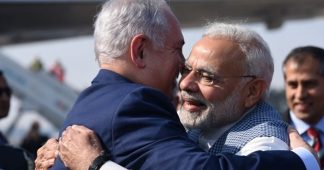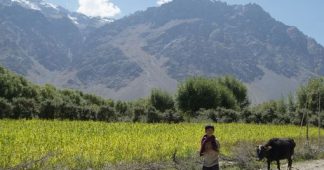It is distressing that parties which should have been most concerned about the implications of this move have fallen in line. The thrust of this majoritarian logic of colonising nationalism will not stop at Kashmir.
By Partha Chatterjee
Aug. 28, 2019
The prime minister and the home minister have both insisted that the special status of Jammu and Kashmir, stuck in as a temporary provision of the Indian constitution, was an egregious anomaly which had to go. Since Kashmir is an integral part of India, it should be treated exactly like the other parts of the country.
By abolishing Article 370, they argue, Kashmir has been brought on par with the rest of India. In the process, they have applied a classic colonial strategy: extend a common measure to the colony to justify why it must be treated differently.
The problem with the princely states
There are specific reasons why Articles 370 and 371 were included in the Indian constitution. The temporary special provisions of these articles were not prompted by Jammu and Kashmir alone. When Mountbatten announced his partition plan in June 1947, several major princely states such as Travancore, Hyderabad and Bhopal were toying with the idea of not joining either India or Pakistan and instead setting up independent sovereign states. Mountbatten firmly rejected this possibility. This led to hectic negotiations with each of the princely states on the terms of accession. To allay the fears of the princes that they would lose their sovereign powers, it was announced that accession would mean that the laws of the dominion government – India or Pakistan – would apply to the states only on three subjects: defence, external affairs and communications. On other matters, the states would be free to come to whatever agreement they wished with the dominion they joined.
Those were the terms of the first instruments of accession with all of the states which chose India – more than five hundred of them – although most of them were clubbed into States Unions such as Saurashtra, Madhya Bharat, Travancore-Cochin, Rajasthan, Patiala and East Punjab, and several smaller states were merged with neighbouring provinces. While the princes became constitutional heads called Rajpramukhs, the state governments now had responsible ministries headed by prime ministers. Each state or states union was supposed to set up its own representative constituent assembly to decide how far it would accept the Indian constitution that was being drafted in New Delhi. This requirement was an attempt by the Indian political leadership to introduce an element of popular consent into the process of accession by the princes, and also use the popular will there as a check on the ambition of the princes.
With a mixture of assurances and threats from Mountbatten and Vallabhbhai Patel, and the diplomatic energy of V. P. Menon, Patel’s right hand man in the states ministry, nearly all the princes were finally persuaded to accede in exchange for a generous privy purse. A problem arose with Junagadh, a tiny state in Kathiawar, whose nawab decided to join Pakistan even though most of his subjects were Hindu. Following a popular revolt led by local Congressmen who set up a provisional rebel government, and a blockade supported by Indian troops, the Nawab fled to Pakistan, leaving behind his diwan, Shah Nawaz Bhutto, (Zulfikar Ali Bhutto’s father) to negotiate the accession to India. A plebiscite was held in Junagadh in which 99% voted in favour of joining India.
The nizam of Hyderabad held out for more than a year, believing he could play off India and Pakistan and remain independent. He would not agree to the Indian insistence on a plebiscite, since 85% of his subjects were Hindu and the result was a foregone conclusion. At one point, the Indian government was willing to give the nizam a railway line to an Indian seaport, a guaranteed 45% reservation for Muslims in the state’s constituent assembly and the right to maintain his own army – far more than anything that was given to Jammu and Kashmir. But Nizam Osman Ali was by this time a virtual prisoner in the hands of a fanatical rabble-rouser called Kasem Razvi, head of an armed militia of Razakars, who wanted Hyderabad to join Pakistan.
Casting aside every piece of sane advice, the nizam turned down the Indian offer. In the end, in September 1948, two days after Jinnah’s death, an armoured division of the Indian army supported by bombers of the air force swept into Hyderabad, leading to the quick surrender of the nizam’s forces and his accession to India. While there was little fighting between the two armies, the entry of the Indian forces led to massive communal violence in various parts of the state, provoked in the first place by the Razakars but followed by a severe retaliation by Hindus. There was no political agreement that produced the accession of Hyderabad to India; just a military takeover. Hence, there was no plebiscite and no constituent assembly. The state was put under the charge of a military governor.
In Jammu and Kashmir, the accession to India signed by Maharaja Hari Singh in October 1947 and the military campaign by the Indian army in Kashmir led to a ceasefire, supervised by the United Nations, in January 1949. In the meantime, there was a political agreement by which the maharaja appointed Sheikh Abdullah of the National Conference as prime minister and agreed to convene a constituent assembly. There was also an assurance on both sides, later endorsed by the UN Security Council, to ratify the accession “in accordance with the wishes of the people”. None of these constitutional terms of accession were unique to Jammu and Kashmir.
Articles 370 and 371
By mid-1949, as the process of constitution making was coming to a close in New Delhi, only Saurashtra, Travancore-Cochin, Mysore and Jammu and Kashmir had managed to set up their constituent assemblies.
At the request of the Indian government, B. N. Rau, the constitutional expert, drafted a model constitution for the states which did not find much approval. Finally, it was decided that all necessary constitutional matters relating to the states, now called Part B States, would be included in the Indian constitution.
At this time, the Saurashtra constituent assembly resolved to accept the Indian constitution in full and disbanded itself. When India’s constitution was promulgated in January 1950, only three states still had constituent assemblies that had not finished their work. Hence, Article 370 was included to define the relation between the Union government and Jammu and Kashmir until the latter’s constituent assembly came up with its own constitution.
Article 371 was a similar temporary provision for ten years that allowed the Union government to declare by presidential order which of its laws would or would not be extended to a Part B state. The immediate reason for this was to accommodate Mysore and Travancore-Cochin, whose constituent assemblies had still not accepted the Indian constitution.
The general elections of 1952 brought in elected Congress ministries in all Part B states, including Mysore and Travancore-Cochin which then proceeded to accept the Indian constitution and dissolve themselves. Thus, from 1952, Article 371 became, in V. P. Menon’s words, “a dead letter”. But Jammu and Kashmir had a National Conference government. Soon, Sheikh Abdullah fell foul of the leadership in New Delhi and was removed from power and arrested. Bakshi Ghulam Mohammed, Abdullah’s cabinet colleague, became prime minister and later joined the Congress. In 1956, the Jammu and Kashmir constituent assembly produced a constitution for the state and disbanded itself.
There is one strand of legal opinion that believes that with this event the provisions of Article 370 became permanent features of the Indian constitution that could not be changed by any authority. Others believe that in the absence of the constituent assembly, the elected legislature of Jammu and Kashmir would have to approve of any such change. In any event, Article 370 was a recognition that there had to be an element of consent of the Kashmiri people in the evolving relation between the state and the rest of India. This is especially significant in view of the fact that the promised plebiscite was never held.
At the same time, Article 371 acquired an extended life because periodic political agitations in various parts of India ended up in agreements that required special constitutional provisions defining the relations of particular states with the Union. Thus, Maharashtra and Gujarat were given special powers to set up developmental boards for Vidarbha, Marathwada and Kutch. Union laws cannot apply to Nagaland, without the agreement of the state assembly, in matters of the religion and social practices of the Naga people, customary law, and ownership of land. Similar special provisions also exist for Mizoram. There are special provisions for Assam, Manipur, Arunachal Pradesh, Sikkim and Goa – provisions that do not apply to the other states.
Few people remember that when Sikkim was annexed by Indian forces during the Emergency in 1975, it was first included in India as an “associate state”, a unique category, and then regularised after the people of Sikkim ratified by a plebiscite the abolition of the monarchy and union with India. This proves that despite the desire for legal uniformity, the specific political conditions under which the people of different parts of the country agree to join the Indian state requires a flexible federal structure. Without it, the dominating force of the state must subjugate the willing consent of the people.
Kashmir as an Indian colony
Nowhere is this proved more tellingly, and tragically, than in Jammu and Kashmir. Over the years, in the course of puppet regimes, rigged elections, popular insurgency, military repression and terrorist violence, the autonomy given by Article 370 was serially diluted, by presidential orders from the Centre as well as with the approval of the state assembly. The Congress party, which ruled in Delhi for most of the last five decades, was primarily responsible for this. True, since the Kashmir dispute had become an international issue and the main bone of contention between Pakistan and India, it was the foreign policy and security aspects that dominated the thinking of those in power. The wishes of the people of Kashmir became insignificant.
This attitude propagated by decision-makers in New Delhi has percolated into the common sense of ordinary people in the rest of India. They have come to believe that Kashmir is a property of India – a valuable piece of real estate that Pakistan wants to grab – and that Kashmiris are a nuisance who must be taught to behave. Of course, democratic decorum required periodic gestures of consultation with local politicians and a nod to Kashmiriyat. But the idea that order had to be maintained in Kashmir by occasional emergencies and a permanent military occupation became thoroughly normalised. The present regime in Delhi, boosted by a new resurgence of nationalist assertion, has now thrown away the veil.
In the old days, liberal governments in imperial Britain or France justified a dual policy of democracy at home and autocracy in the colonies by pointing out that even though democracy was universally the best form of government, the colonial peoples were not yet ready for it. They needed a spell of enlightened authoritarian rule before they could be trusted with the rights of freedom. Those are the words that BJP leaders are now using to justify the extraordinary clampdown in Kashmir. They admit that conditions are harsh but it is all for the ultimate good of Kashmiris.
The rhetoric marks a change in the way nationalism is understood in India. Fifty years ago, Indian nationalism was still primarily anti-colonial. It saw itself as fighting against the colonial exploitation and racial discrimination perpetrated by Western imperial powers and was in solidarity with freedom struggles in Africa and Southeast Asia. Now India prefers to think of itself as one of the great powers of the world. What do Indians have in common with the people of Zimbabwe or Sudan or Palestine? Why, like all great powers, we too have our own colonial problem in Kashmir which we will now solve clinically and unsentimentally, in a way our previous governments had never dared to do.
There are speculations on why the BJP government chose this moment to abolish Article 370, dismember Jammu and Kashmir and bring it under direct physical control. Perhaps the impending deal in Afghanistan between the United States and the Taliban and the strategic advantage this might give to Pakistan had something to do with it. There may be plans afoot for property development and demographic change in Kashmir to alter the effective political character of the state, but those plans would take years to bear fruit. Or perhaps it was the utter confusion and despair in the ranks of the opposition parties that presented an opportunity to the government to push the measure through both houses of parliament. The legality of the step will certainly come under judicial scrutiny in the days to come. But the political implications for the Indian people of what has been done are not merely alarming but catastrophic.
Political consequences
First of all, it creates a precedent by which an original and much discussed constitutional provision touching upon the basic structure of federal relations between the Union and the states has been annulled by executive order, ratified by a simple majority in Parliament, without any consultation with the elected representatives of the people of the concerned state.
Second, it gives the Union government the power to partition a state without any reference to its people or their elected legislature.
Third, in a complete reversal of the normal process of integration of the federating parts into the whole, a state that has existed since the beginning of the constitution has been demoted to a Union territory, supposedly in order to make it better suited for development and democracy. One cannot think of a more colonial reasoning than that.
It is distressing that even those parties and leaders who should have been most concerned about the implications of this move for the federal polity have fallen in line or remained silent. The thrust of this majoritarian logic of colonising nationalism will not stop at Kashmir. Every minority identity that appears to stand in the way of a homogeneous nationhood – language, religion, caste, gender – will come under attack. Only the Hindu upper-caste male who speaks Hindi will have the sovereign privilege of not having to prove his Indianness.
Unlike the old kind of colonialism which was discredited by the international order after decolonisation, internal colonialism is a domestic matter that has no rules. Is India becoming the laboratory for developing the constitutional rules of internal colonialism? Unfortunately, those who may be its next victims seem not to be worried.
* Partha Chatterjee is a social scientist and historian.
Published at https://thewire.in/government/kashmir-is-the-test-bed-for-a-new-model-of-internal-colonialism
